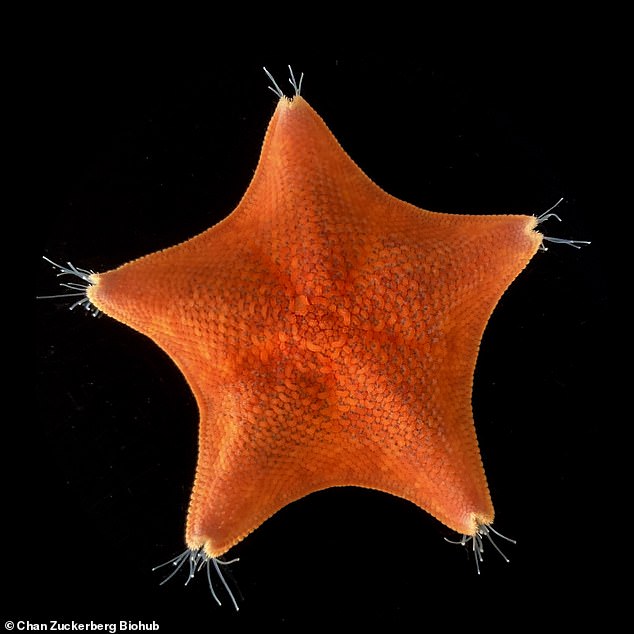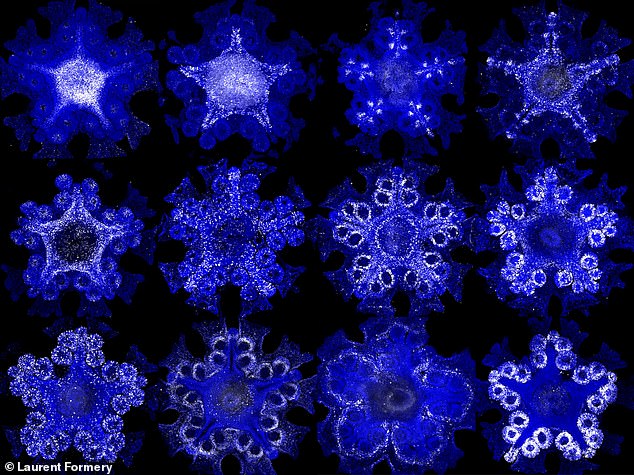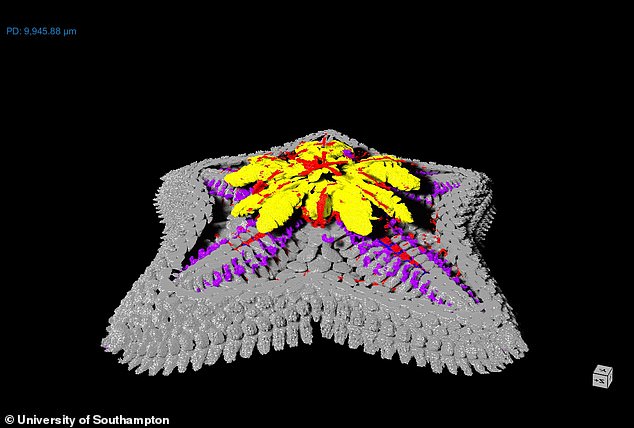Scientists reveal where a starfish’s head is – with VERY surprising results
>
- Previous studies have indicated that starfish have no head at all
- Scientists now say the answer is ‘much more complex than expected’
It’s a hobby that many will remember fondly – searching for sea creatures in rock pools during summer vacation.
But the initial excitement of the starfish’s discovery may have been overshadowed by an overarching question: Where is its head?
The unusual physical design of this animal has, until now, led many to conclude that it may not have had a head at all.
But researchers have finally settled this debate, and the answer is “much more complex than expected.”
A team of international scientists has mapped the body regions of starfish by creating a 3D atlas of their genes.

If you put a hat on a starfish, where would you put it? Finally, scientists have settled the debate about the location of the head. Pictured: Patrick Star from SpongeBob SquarePants

The unusual physical design of this animal has, until now, led many to conclude that it may not have had a head at all
They are part of a group of animals called echinoderms, which also includes sea urchins and sand dollars.
The body parts are arranged in five equal sections, in a unique symmetrical body plan.
This is different from other animals, including humans, who have the left and right sides mirroring each other.
Dr Geoff Thompson, one of the study’s authors from the University of Southampton, said: ‘How the different body parts of echinoderms relate to those we see in other animal groups has been a mystery to scientists throughout our study. they.
“In their bilateral relatives, the body is divided into a head, trunk, and tail.
But just by looking at a starfish, it’s impossible to see how these parts relate to the animals’ bilateral bodies.
“When we compared gene expression in starfish to other groups of animals, such as vertebrates, an important part of the body plan appeared to be missing.

A team of international scientists has mapped the body regions of starfish by creating a 3D atlas of their genes

Researchers suggest that starfish and other echinoderms may have evolved their five-segmented body plan by losing the trunk region of their ancestors.
“Genes that are normally involved in shaping the animal’s trunk were not expressed.”
“The entire body plan of echinoderms appears to be roughly equivalent to the head in other groups of animals.”
This suggests that starfish and other echinoderms may have evolved their five-section body plan by losing the trunk region of their ancestors, the researchers said.
They explained that this would have allowed them to move and feed differently.
The results were published in the journal Nature.
(Tags for translation) Daily Mail
